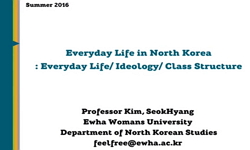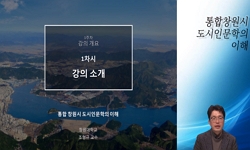이 연구는 서울이 도시화되는 과정에서 발생했던 ‘러시아워’ 현상의 역사적 과정을 시ㆍ공간의 사회학적 시각에서 이해하고, 이를 통해 산업화시기에 서울시민들이 겪었던 근대적 시ㆍ...
http://chineseinput.net/에서 pinyin(병음)방식으로 중국어를 변환할 수 있습니다.
변환된 중국어를 복사하여 사용하시면 됩니다.
- 中文 을 입력하시려면 zhongwen을 입력하시고 space를누르시면됩니다.
- 北京 을 입력하시려면 beijing을 입력하시고 space를 누르시면 됩니다.

거리 위의 모더니티 - 서울의 ‘러시아워’ 현상에 관한 시·공간의 사회학적 연구 : 거리 위의 모더니티 = Modernity on the Street: The Sociological Approach to ‘Rush Hour’ in Seoul
한글로보기https://www.riss.kr/link?id=A76462055
- 저자
- 발행기관
- 학술지명
- 권호사항
-
발행연도
2004
-
작성언어
-
-
주제어
러시아워 ; 시공간 ; 근대성 ; 도시 ; 일상생활 ; 도시거리 ; 통근 ; 도시교통 ; rush hour ; time-space ; modernity ; city ; everyday life ; commuting ; urban streets ; urban traffic
-
KDC
331
-
등재정보
KCI등재후보
-
자료형태
학술저널
- 발행기관 URL
-
수록면
205-235(31쪽)
- 제공처
-
0
상세조회 -
0
다운로드
부가정보
국문 초록 (Abstract)
이 연구는 서울이 도시화되는 과정에서 발생했던 ‘러시아워’ 현상의 역사적 과정을 시ㆍ공간의 사회학적 시각에서 이해하고, 이를 통해 산업화시기에 서울시민들이 겪었던 근대적 시ㆍ공간 경험의 특징을 살펴보는 데 목적을 두었다. 첫째로, 러시아워 현상이 발생하게 되는 조건을 근대적 시ㆍ공간 구조와 그것의 딜레마에서 찾았으며, 시간의 표준화와 이동경로의 구조화가 이동의 시ㆍ공간적 제약임을 밝히고자 했다. 둘째로, 근대적 교통체계의 발달로 인해 시ㆍ공간 압축 현상이 일반화되었지만 도시계획의 부재와 교통체계의 한계로 인하여 오히려 시ㆍ공간의 지체 현상이 초래한다는 점을 밝혔다. 셋째로, 러시아워의 풍경과 경험을 식민지 시기부터 살펴보면서 당시의 러시아워는 ‘승차난’을 의미했다면, 현대로 올수록 ‘교통체증’을 의미하는 쪽으로 변해왔다는 사실을 언급하였다. 마지막으로 러시아워는 시간의 가속화와 위험의 일상화 낳게 되었고, 이로 인해 사람들은 거리 위에서 혼돈스런 근대를 경험하게 되었음을 논의하였다.
다국어 초록 (Multilingual Abstract)
This study aims to analyze the historical emerging process of the ‘rush hour’ that are derived from the urbanization of Seoul, based on the sociological view on time-space, and to consider the characteristics of modern time-spatial experiences t...
This study aims to analyze the historical emerging process of the ‘rush hour’ that are derived from the urbanization of Seoul, based on the sociological view on time-space, and to consider the characteristics of modern time-spatial experiences that Seoulites have undergone during the 1960s and 1970s. The main contents of this study are summarized as follows. First, this study argues that the modern time-spatial structures and its dilemmas are the conditions of rush hour phenomena, and have been the endeavor to identify that the standardization of time and the structuration of transfer path had restricted the time-space. Second, this study demonstrates that the compression of time-space is generalized by developing the modern traffic systems, but, the time-space have been congested because of the limits of traffic systems and the absence of city planning. Third, this study argues that rush hour meant, by its very nature, the ‘difficulties of riding transportations’, but had been gradually understood as a ‘traffic jam’ by expanding the consumption and by increasing the demand for car. Finally, this study suggests that rush hour had generated the acceleration of time and the routinization of danger, therefore people had experienced a confusional modern times on the street.
목차 (Table of Contents)
- 1. 서론
- 2. 이동의 시ㆍ공간적 제약: 근대적 시ㆍ공간의 딜레마
- 3. 러시아워의 풍경과 경험의 변화
- 4. 거리 위의 모더니티: 스피드와 위험의 일상화
- 5. 결론
- 1. 서론
- 2. 이동의 시ㆍ공간적 제약: 근대적 시ㆍ공간의 딜레마
- 3. 러시아워의 풍경과 경험의 변화
- 4. 거리 위의 모더니티: 스피드와 위험의 일상화
- 5. 결론
- 참고문헌
- - 초록 -
- - Abstract -
동일학술지(권/호) 다른 논문
-
한국의 여성언어를 통해 본 여성의 사회문화적 위치에 대한 연구
- 한국사회조사연구소
- 이화연(Lee Hwa-yeon)
- 2004
- KCI등재후보
-
애니메이션 영화 〈슈렉〉의 기호학적 분석 - 등장인물의 이미지 및 이데올로기를 중심으로
- 한국사회조사연구소
- 안주아(Ahn Joo Ah)
- 2004
- KCI등재후보
-
성 분업의 근대적 재구성 - 한국 여성의 ‘가족형성기 탈취업’ 경향의 변화를 중심으로
- 한국사회조사연구소
- 최선영(Choi Sun-Young)
- 2004
- KCI등재후보
-
시민운동과 17대 국회의원 선거 - 낙선운동의 효과를 중심으로
- 한국사회조사연구소
- 김영태(Kim Young-Tae)
- 2004
- KCI등재후보




 스콜라
스콜라






